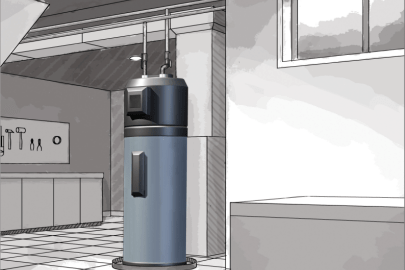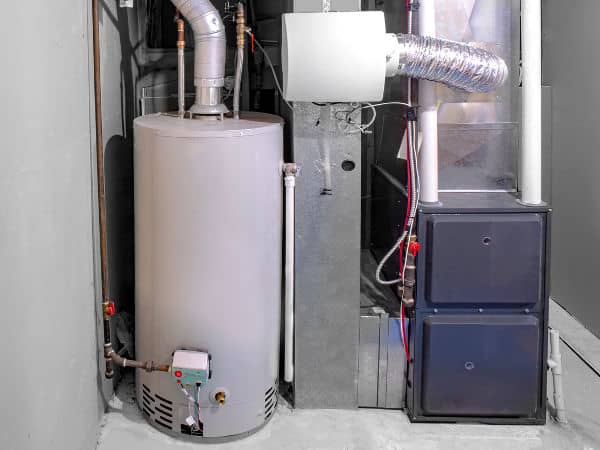Ways to Effectively Maintain Your Home's Hot Water System
Ways to Effectively Maintain Your Home's Hot Water System
Blog Article
Just how do you actually feel about What Kind of Maintenance Do Water Heaters Need??

Hot water is crucial for everyday comfort, whether it's for a rejuvenating shower or washing recipes. To ensure your hot water system runs efficiently and lasts longer, normal maintenance is crucial. This article supplies useful ideas and insights on just how to maintain your home's warm water system to prevent disturbances and pricey fixings.
Intro
Maintaining your home's warm water system might appear daunting, however with a few easy actions, you can ensure it operates efficiently for several years to find. This guide covers everything from recognizing your warm water system to DIY upkeep pointers and knowing when to employ professional aid.
Importance of Preserving Your Warm Water System
Normal upkeep not just extends the lifespan of your warm water system yet additionally guarantees it operates efficiently. Overlooking maintenance can cause decreased efficiency, higher energy expenses, and even premature failure of the system.
Indications Your Warm Water System Demands Upkeep
Recognizing when your warm water system requires focus can prevent significant issues. Watch out for indications such as inconsistent water temperature, unusual noises from the heater, or rusty water.
Flushing the Water Heater
Flushing your water heater removes sediment build-up, boosting performance and lengthening its life.
Monitoring and Changing Anode Rods
Anode rods avoid corrosion inside the tank. Inspecting and changing them when broken is crucial.
Facility Concerns Needing Professional Help
Instances consist of significant leaks, electrical issues, or if your water heater is constantly underperforming.
Regular Professional Upkeep Advantages
Specialist maintenance can consist of complete evaluations, tune-ups, and ensuring compliance with safety criteria.
Inspecting and Changing Temperature Level Settings
Adjusting the temperature level setups guarantees optimal performance and safety.
Do It Yourself Tips for Maintenance
You can perform numerous maintenance jobs on your own to keep your hot water system in leading condition.
Looking for Leaks
Routinely inspect pipelines and connections for leakages, as these can cause water damage and greater bills.
Recognizing Your Hot Water System
Prior to diving into upkeep tasks, it's handy to comprehend the basic parts of your hot water system. Commonly, this consists of the hot water heater itself, pipes, anode poles, and temperature controls.
Month-to-month Maintenance Tasks
Normal monthly checks can aid capture minor concerns before they rise.
Testing Stress Relief Valves
Checking the pressure relief valve ensures it operates correctly and stops too much pressure accumulation.
Shielding Pipelines
Shielding hot water pipes lowers heat loss and can save power.
When to Call a Professional
While do it yourself upkeep is useful, some concerns call for professional experience.
Conclusion
Routine upkeep of your home's hot water system is vital for performance, longevity, and cost savings. By complying with these pointers and knowing when to look for specialist aid, you can ensure a trustworthy supply of warm water without unanticipated disruptions.
Water Heater Maintenance Tips
Test the TPR Valve
Shut off the power and the cold-water supply valve. Place a bucket under the pipe connected to the temperature-pressure-release (TPR) valve on the top or side of the tank. (This valve opens if the tank pressure gets too high.) Lift the valve’s tab to let some water out, then let go. If water keeps flowing, drain the tank partway, unscrew the old valve with a pipe wrench, and install a new one. Check the Anode Rod
Put a hose to the tank’s drain cock and let out a few gallons of water. Now fit a 1 1/16-inch socket onto the rod’s hex head on top of the heater (or under its top plate) and unscrew the rod. If it’s less than ½ inch thick or coated with calcium, buy a new one, wrap its threads with Teflon tape, put it back in the tank, and tighten securely. Use this segmented rod if headroom above the tank is limited. Drain the Tank and Wash Out Sediment
Drain the remaining water in the tank into the bucket, then stir up the sediment on the tank’s bottom by briefly opening the cold-water supply valve. Drain and repeat until clean water comes out of the hose. Close the drain cock, refill the tank, and turn its power back on. Adjust the Temperature
Find the temperature dial on the side of the tank and unscrew its cover. Adjust the dial to 120 degrees using a flathead screwdriver. For every 10 degrees the temperature is lowered, you can expect to save up to 5 percent in energy costs. Turn the water heater off or the thermostat down to its lowest setting if you plan to be away from home for more than three days. Insulate the Pipes
Buy some self-sticking 3/8-inch-thick foam pipe insulation that matches the pipes’ diameter. Slide the foam over the hot-and cold-water pipes as far as you can reach. Insulating the cold-water pipe prevents condensation in summer. Peel the tape and squeeze the insulation closed. If the pipe is 6 inches or less from the flue, cover it with 1-inch-thick unfaced fiberglass pipe wrap. https://www.thisoldhouse.com/plumbing/21016402/how-to-maintain-a-water-heater

I discovered that blog entry on Water Heater Maintenance Tips You Can't Afford to Forget when doing a lookup on the search engines. Be sure to set aside a second to promote this entry if you appreciated it. We love reading our article about What Kind of Maintenance Do Water Heaters Need?.
Book Instantly Report this page